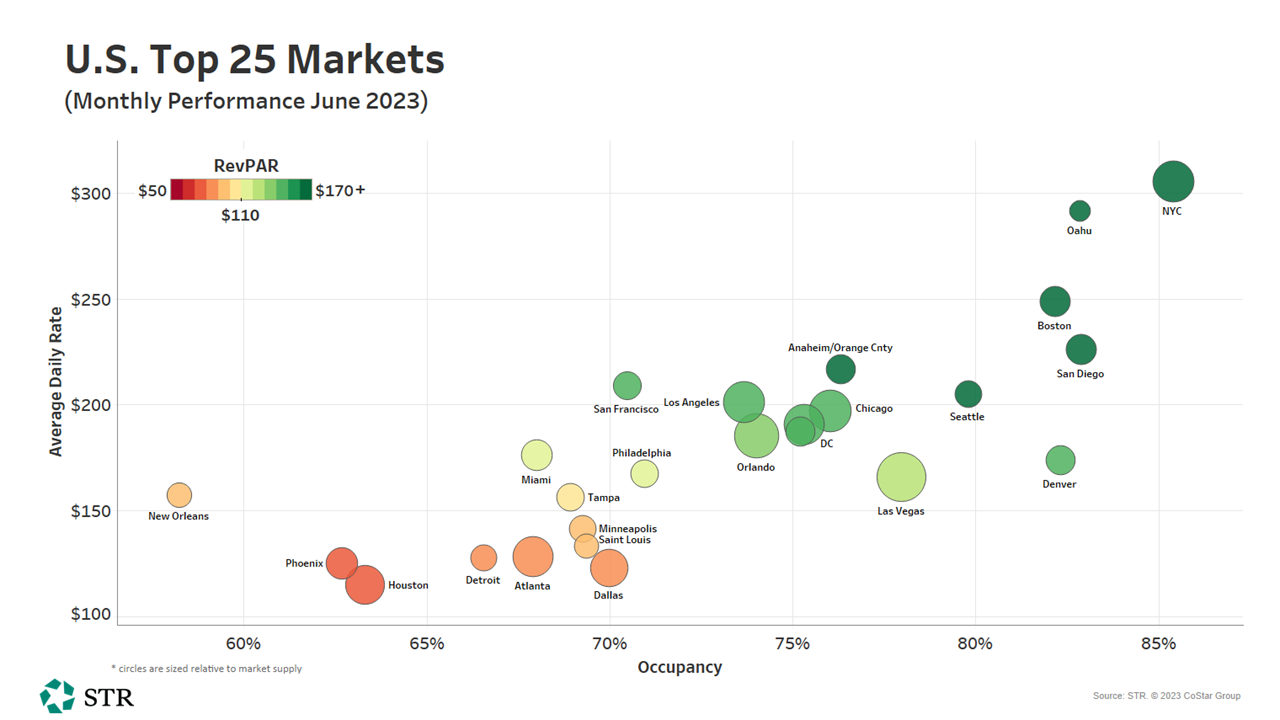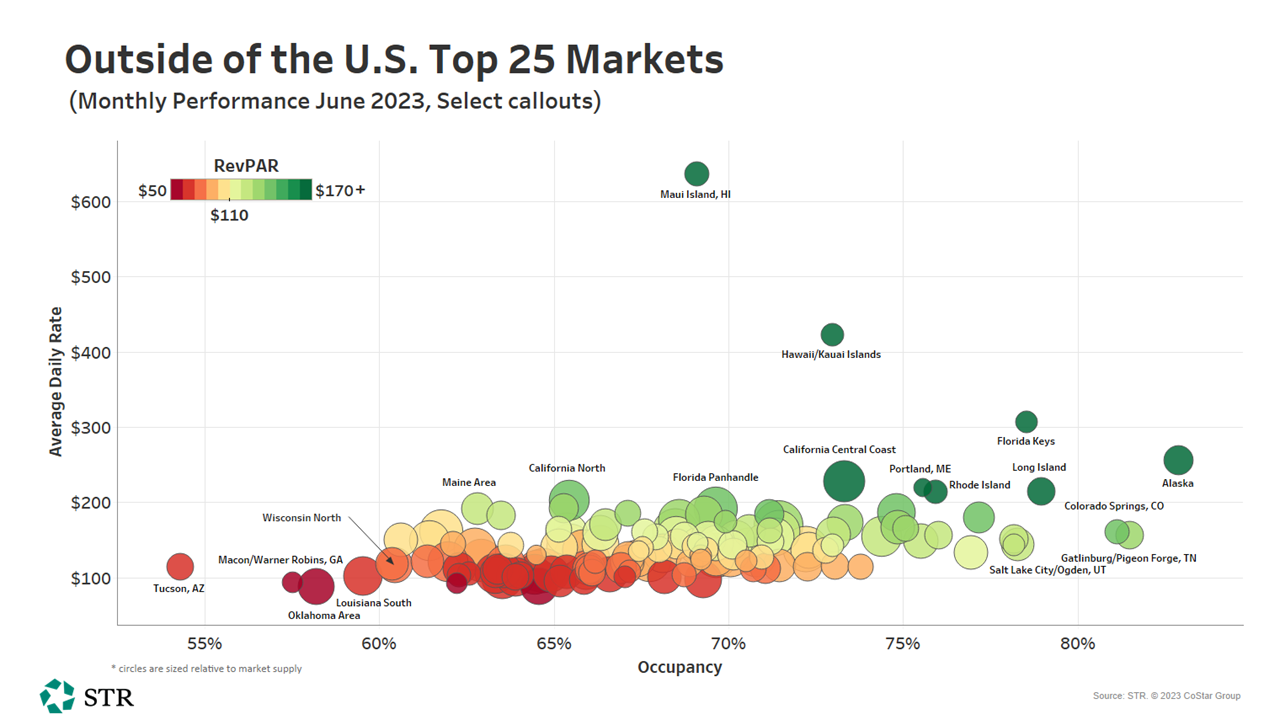June 2023 Top-Line Metrics (percentage change from June 2022)
- Occupancy: 69.7% (-0.4%)
- Average daily rate (ADR): US$158.40 (+2.3%)
- Revenue per available room (RevPAR): US$110.33 (+1.9%)
Key points
- U.S. hotel demand declined slightly year over year, but modest supply growth helped mitigate the impact on occupancy.
- Another month of moderate ADR growth (+2.3%) led RevPAR to rise 1.9%.
- Normalization continues to be the theme of U.S. hotel performance, as weekend occupancy declined, and weekday occupancy increased relative to 2022.
- Chain-scale performance further supports normalization, as high-end (Luxury/Upper Upscale) hotel demand grew, and Midscale/Economy hotel demand declined in June.
- Luxury chains reported further softening in ADR as the balance between Luxury and Upper Upscale ADR slowly reverts to the longer-term average.
- Transient demand growth outpaced group demand growth for the first time since early 2021 as the group demand equation included a difficult year-over-year comparison.
- The Top 25 Markets continued to be a demand bright spot, growing 0.6% in June and 0.7% for the quarter.
- The volume of rooms under construction remained stable.
The modest occupancy decline, which was underpinned by a 0.1% demand decline, moderated pricing power.

